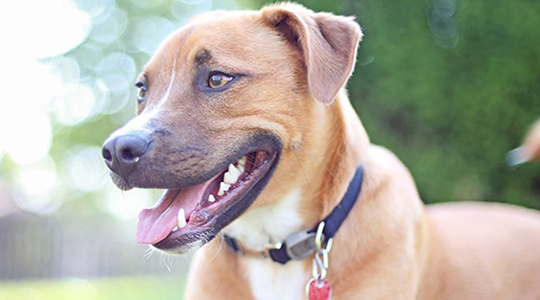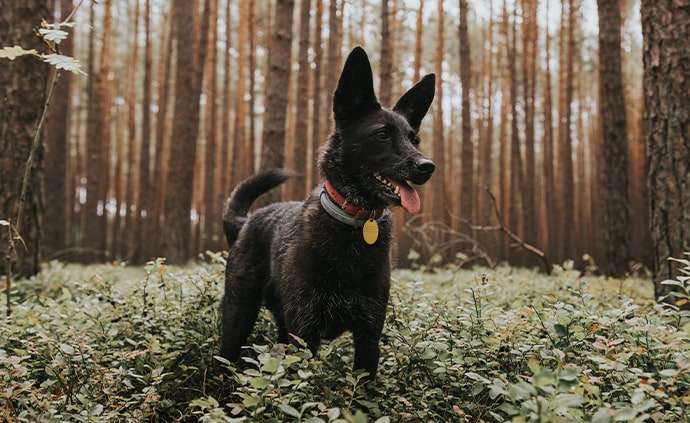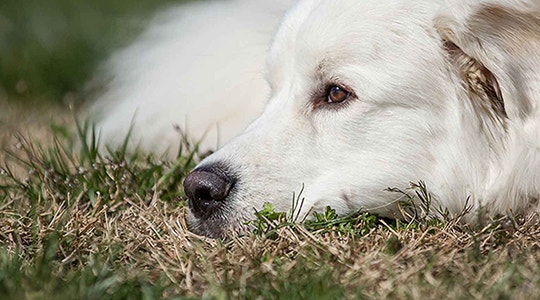
What Breed Is My Dog?
While no two dogs are exactly alike, our pets do have genetic characteristics that contribute to their behavior and their predisposition for certain health concerns. This is just one reason it’s important for future dog owners to spend time researching the best breed (opens in new window) for their family before adopting a new best friend. (opens in new window)
For many dog owners, knowing your dog's breed is not an issue. Responsible breeders should provide new owners with health and pedigree papers, and there are certain breeds more common at animal shelters (opens in new window) and rescues. But if you’re considering adopting (opens in new window) or have a mixed-breed dog, it can be a challenge identifying the various breeds that make up your dog.
Why Is It Important to Know a Mixed-breed Dog's Ancestry?
An estimated half of all dogs are mixed-breed, and each of these breeds is characterized by unique behavioral traits. When training or trying to solve behavior problems, knowing what breed characteristics influence your best friend's behavior can help you and your trainer leverage those characteristics to produce a more pleasant household environment.
Additionally, when taking your dog to the vet, informing the doctor of your dog’s breed makeup will help them tailor the correct diet, exercise (opens in new window) and preventive medicine regimen. All of this leads to a more informed owner — and a healthier and happier dog.

How to Determine Your Mixed-breed Dog’s Lineage
Here are a few ways to help solve the mystery of your mixed-breed dog’s ancestry.
Research Your Dog’s Physical Characteristics
The way a mixed-breed dog or puppy looks can be a big indicator of their lineage. In fact, shelter staff often make educated guesses about a mixed-breed dog’s makeup.
To start, make a list of your dog’s physical traits:
- Body: How big is your dog? Are they short or tall? Thick and muscular or slender and long?
- Muzzle: Does your dog have a short, average or long face?
- Tail: Is their tail docked or bobbed? Long, short, curly, pointy?
- Ears: Does your pup have floppy or erect ears? Long or short?
- Coat: What color or pattern is your dog’s coat? Is their hair or fur soft or wiry? Long, medium or short?
Once you have a list of your dog’s characteristics, you can begin researching and connecting the dots between your dog’s traits and common breed attributes.
Explore Breed Group Behavior
Many dog breeds were originally bred for specific tasks, which can affect how certain breeds behave — and can even be helpful in identifying your mixed-breed dog’s lineage.
Note any behaviors your pup frequently displays. Does your canine best friend chew the furniture, love retrieving toys, hide their food or point at hidden birds or rabbits? Each of these traits is identified with certain breeds
Here are just a few behaviors that can indicate breed group:
- Herding the family cat. If your dog tends to circle or stare, nip or bark at other pets or children, they may belong to the herding group. Originally bred to herd sheep and cattle, some breeds in this group include collies, Pembroke Welsh corgis and German shepherds.
- Chase small (or large) animals. If your canine companion has a strong prey drive, they might have lineage from a breed in the hound group. Greyhounds, Ibizan hounds, beagles and basset hounds are a few of the breeds in this group of dogs originally bred for hunting.
- Digging in the yard. Dogs in the terrier group were bred to hunt vermin, leaving them with a penchant for digging and burrowing. If your dog exhibits this behavior, they may have breeds such as Russell terrier, Boston terrier or Scottish terrier in their background.

Order a Dog DNA Test
It can be difficult to know the various breeds that make up your dog based on their behavior or the 'eye test' alone.
To determine a mixed-breed dog's ancestry, perform a safe Wisdom Panel™ Dog DNA Test. With the simple swipe of a cheek swab, the DNA sample can determine the ancestry of a mixed-breed dog by testing for more than 170 breeds. Within three weeks, dog owners are emailed an official ancestry report that reveals the dog's genetic background.
To learn more, go to www.wisdompanel.com. (opens in new window)




